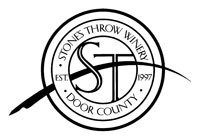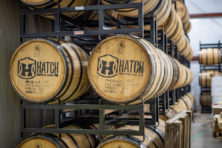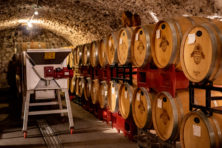Wine Trails: No Shortcuts at Stone’s Throw
- Share
- Tweet
- Pin
- Share

I’ve heard people say that there are individuals they could sit and listen to for hours, but I’ve seldom experienced that situation. Listening has never been an area of competence for me, but as Russell Turco, owner and winemaker at Stone’s Throw winery, was explaining the difference between aging wine in French oak versus American oak, I discovered the pleasure of talking with – or perhaps, listening to – an expert and began appreciating what 50 years of winemaking experience brings to a discussion of wine.
The fact that I was drinking a glass of Turco’s 2018 Petite Verdot, which had benefited from aging in French oak, enhanced the experience and validated his expertise.
“Some grapes, like a Zinfandel, need a slap in the face, and American oak can provide that punch,” he said, “but most varietals need more of a pat on the back, which is what French oak delivers.”
Being a wine club member at Stone’s Throw, I have tasted most of the winery’s creations during the past two years, but listening to Turco explain the process of fermenting, aging and, in some cases, blending, I realized why all of the wines he produces are exquisite.

“In the early stages of aging, oak gives a wine additional character, and later in the process, it begins to soften the tannins and smooth the wine,” he said. “A winemaker needs to constantly taste to assess what stage of the aging process their wine is at and determine the next step.”
I ordered a glass of the Sangiovese and continued to listen. Turco said he uses new French oak to begin fermenting his chardonnay in order to add body, depth and a little smokiness, but he ferments some of the wine in stainless-steel casks so he can blend the two wines from one varietal to find that perfect balance that separates his chardonnay reserve from other wines made from the same grape.
I thought I knew something about wine, but sitting in Vino! Vino! – Stone’s Throw’s adjoining restaurant – while Turco spoke, I was transported back to college, listening to one of my favorite professors, who had spent a career researching one subject, lecture with incredible knowledge and passion. If my college lectures had been accompanied by wines from Stone’s Throw, I would have attended more of my classes.
Like all great professors, Turco interjected stories and told me about a dinner he’d had with the world-renowned winemaker Robert Mondavi. He told Turco that his idea of shipping quality grapes from California’s finest small vineyards to make wine in Door County, Wisconsin, may have been the dumbest thing he’d ever heard – but then encouraged Turco to make the move.
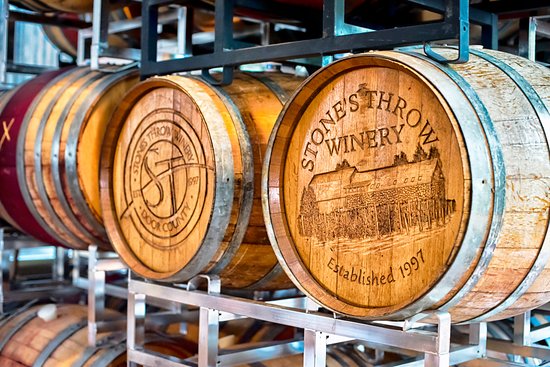
That was, and still is, the business model: Find the best grapes in California’s top wine regions, ship them at their peak ripeness to Baileys Harbor, and make wine using traditional methods. As I sipped my next glass of wine, a 2020 Lagrein, I had further validation that his “dumb idea” had turned out quite well.
Door County has a reputation – and some might argue even a stigma – of focusing on sweet wines that are often made from fruit other than grapes, and using sugar as a substitute for the sweetness that can be achieved naturally only by using fully ripened, high-quality wine grapes.
I’ve learned that particular generalization, although having some validity from the peninsula’s winemaking history, is no longer accurate, and Stone’s Throw customers learn this lesson on their first visit to the winery. Many of those customers also become wine club members and thereby have the opportunity to drink wine made from varietals that are not available to those who are not club members.
Turco splits his time between Door County and his second home in Florence, Italy, and he has a strong preference for Italian grape varieties, which he often uses in his wine club selections. He also advocates the Italian winemaking style, which he believes honors the traditional methods better than other styles.
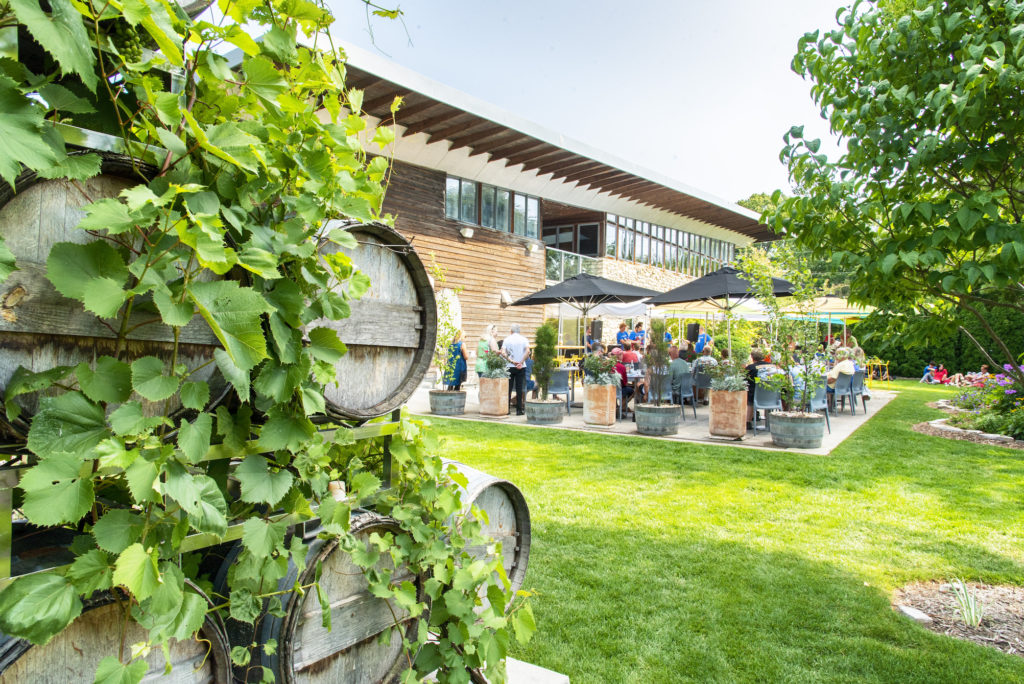
Tradition and respect for it play a significant role in our conversation. When I ask Turco to describe his winemaking philosophy, he repeats that he believes he’s a traditionalist, explaining that there’s a reason why things that are done well – like making great wine – are done the way they are.
But he also believes it’s necessary to challenge tradition in order to improve, as long as you understand and respect that tradition, and you never, never use that challenge as an excuse to take a shortcut.
Twenty-five years ago, Turco challenged a tradition, stuck his neck out, began sourcing grapes from small California vineyards, and started making his wines in his Door County winery. He took no shortcuts, never compromised on quality, never shortchanged traditional methods and began to change the perception of wines made in Door County.
And sitting across the bar from him, drinking my glass of Lagrein and eating the cheese, sausages, olives and bread from my antipasti plate, I was grateful that he’d taken Robert Mondavi’s advice to pursue his “dumb idea.” I can’t think of a better way to spend an afternoon.
Jim Schnaedter describes himself as a wine appreciator, but not an expert. “I love drinking it, pouring it, talking about it and writing about it, but the more I do of each, the more I learn what I don’t know about it.” He sets out to discover Door County wines and their makers in this series.


